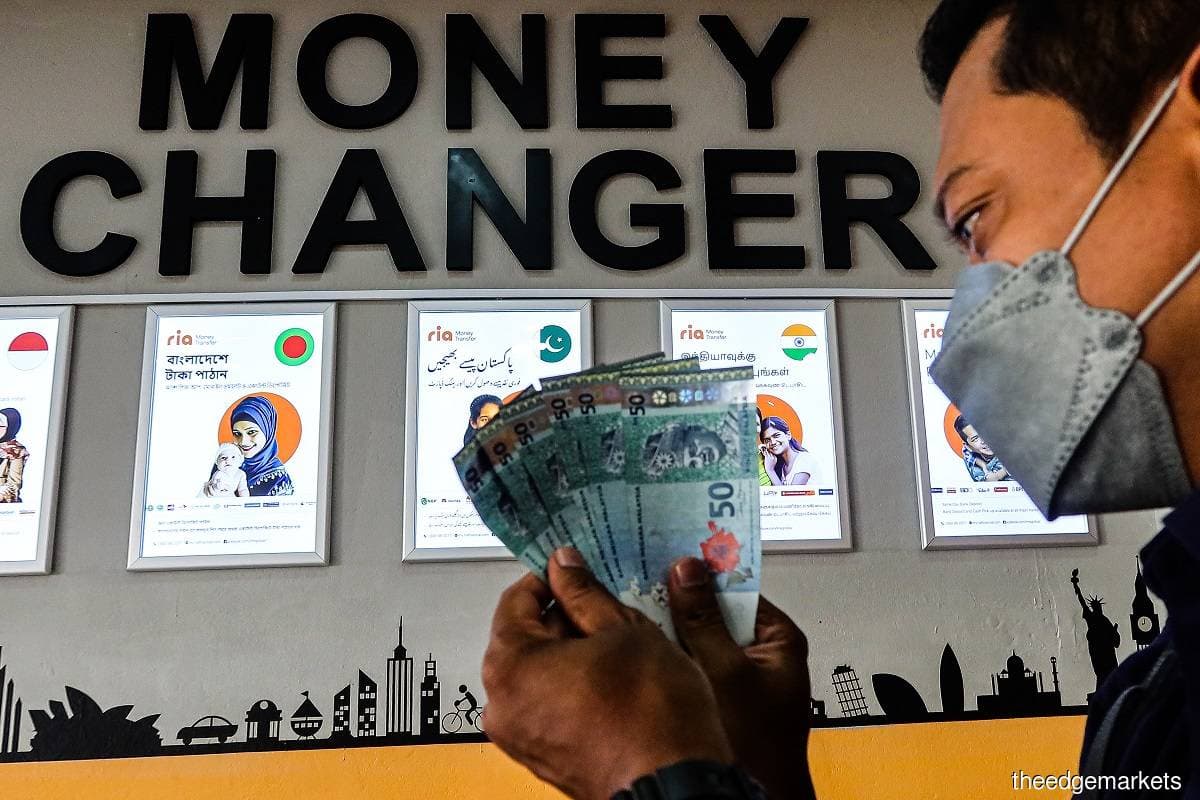
KUALA LUMPUR (April 25): The Singapore dollar hit an all-time high against the Malaysian currency on Monday (April 25) due to adjustments made by the Monetary Authority of Singapore (MAS), coupled with a weakening ringgit, according to economists.
The Singapore dollar-to-ringgit exchange rate rose to a record high of 3.1665 in the morning. It was later traded at 3.1651, before closing at 3.1696. The previous high of 3.1650 was registered on March 31, 2017, according to Bloomberg data.
The Singapore currency has risen 2.72% against the ringgit from 3.0857 as at Dec 31, 2021.
According to Bank Islam chief economist Dr Mohd Afzanizam Abdul Rashid, the MAS' recent adjustments would give Singapore a head start in normalising its monetary policy stance.
"The MAS has already started tightening its monetary policy by targeting the Singapore dollar NEER (nominal effective exchange rate) for appreciation in its recent monetary policy meeting on April 14,” Mohd Afzanizam told The Edge when contacted.
The ringgit, on the other hand, had weakened further against the US dollar to 4.357. This is the lowest level seen since May 18, 2020, when the ringgit was trading at 4.3610 against the greenback.
The biggest uncertainty for the weakening ringgit now is how the US Federal Reserve (Fed) will unwind its monetary easing, Mohd Afzanizam said. The Fed is set to deliver a larger-than-usual 50 basis points rate hike next month and may soon announce further details on their plans for balance sheet reduction.
"They (Fed) used to say that inflation was temporary and therefore could weaken. But that's not the case, and if you look at the many Fed officials, it seems that they are lagging behind in tightening monetary policy.
"We know that higher commodity prices will benefit the government and give it more policy space. That's important because the economic recovery is still in the early stages. In that sense, the Malaysian economy should be able to recover decently this year.
"In Malaysia, inflation has remained stable for now, as the CPI (Consumer Price Index) rose at a rate of 2.2% for the second consecutive month in March. In this sense, BNM (Bank Negara Malaysia) would have the room to keep the OPR (overnight policy rate) stable in the near term,” he added.
The economist said his US dollar-ringgit forecast remains at 4.15 but projections could be revised, depending on the outcome of next week's US Federal Open Market Committee meeting.
Jeffrey Halley, a senior analyst and economist at OANDA, said the ringgit seems to be becoming an indicator of China's growth weakness, as China is Malaysia's largest trading partner.
"In this environment, the weakness of the ringgit will continue unless China cranks up stimulus measures, or the yuan stops weakening. BNM showed no signs of tightening monetary policy, also putting upward pressure in the cross,” he said.
“Despite the weakness of the ringgit in the face of the rise in oil and palm oil prices, it appears that growth fears in China currently carry more weight in ringgit sentiment,” he added.
Crude oil, CPO not enough to offset largest exports, lead to weakening of ringgit
Although Malaysia is a net exporter of crude oil and a major producer of crude palm oil (CPO), these products are not enough to offset the country's largest exports, such as electrical and electronic products, said senior FX strategist at DBS Group Philip Wee.
"That’s why the ringgit is more vulnerable to a slowdown in global growth prospects, especially in the world's largest economies — the US, China and the Eurozone. This is also why the ringgit is a managed float that is closely correlated to emerging Asian currencies," Wee said.
AmBank group chief economist and head of research Dr Anthony Dass said strong commodity prices have kept the ringgit from sliding too much. He explained that part of the weakening of the ringgit is due to the hawkish tone of global central banks in withdrawing their cheap policy rates.
“Being sensitive to the oil price movement, the strong upside to Brent oil price has provided some buffer to the ringgit from slipping too much,” he said.
He added that the ringgit is expected to come under weakening pressure against major pairs in the near term. “Stability to ringgit is more likely to be seen once we start to factor BNM normalisation of its policy rate, health of the economic fundamentals, besides the economic and inflation outlook”.



